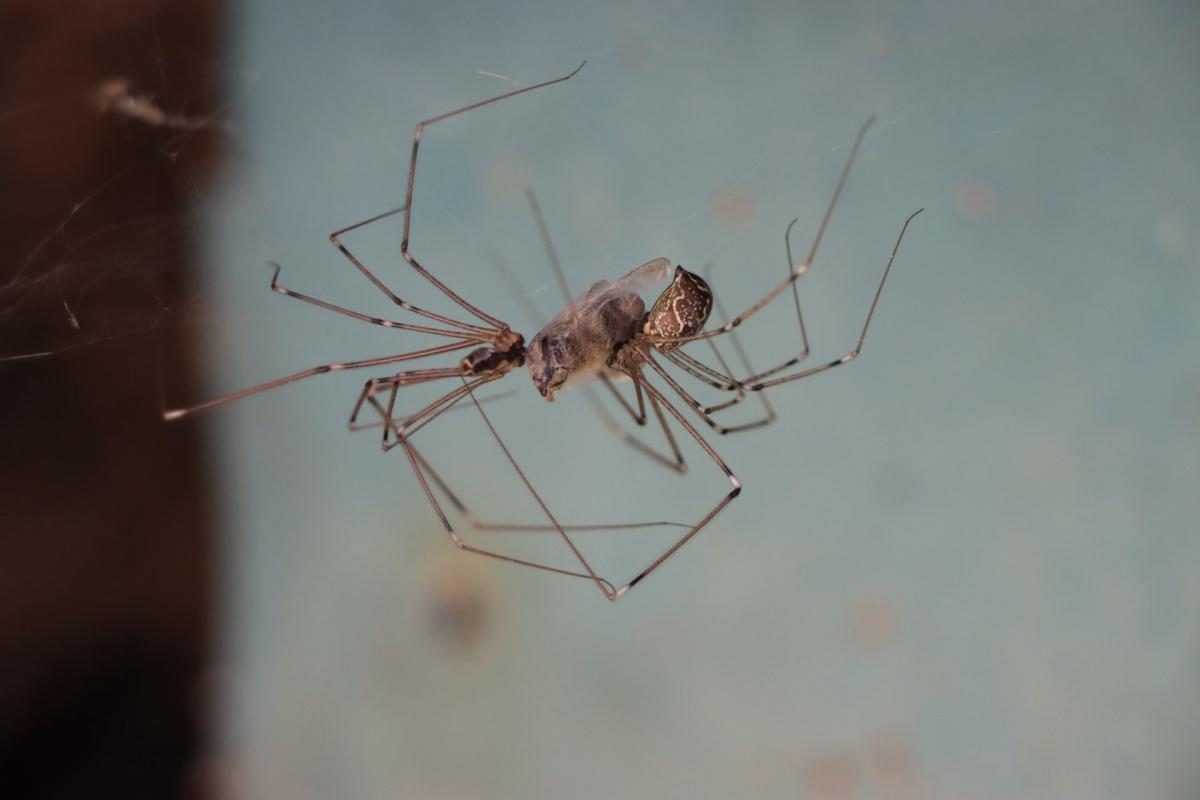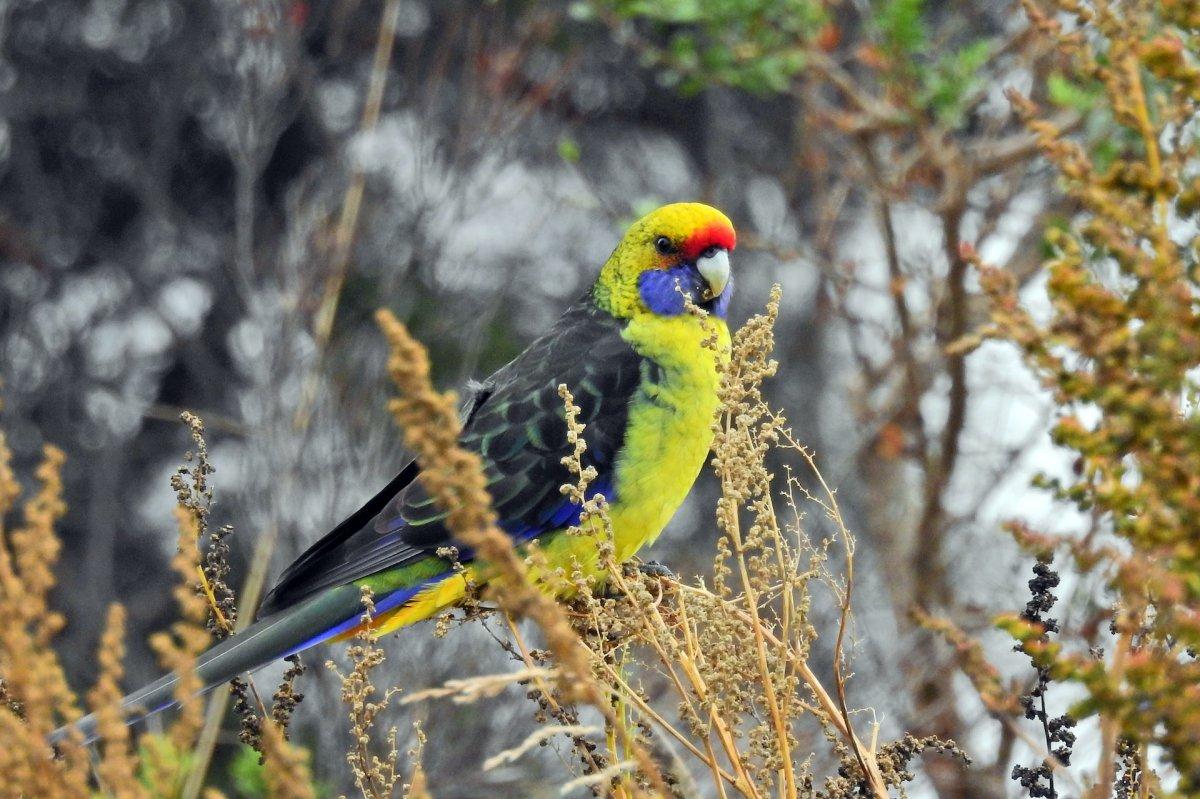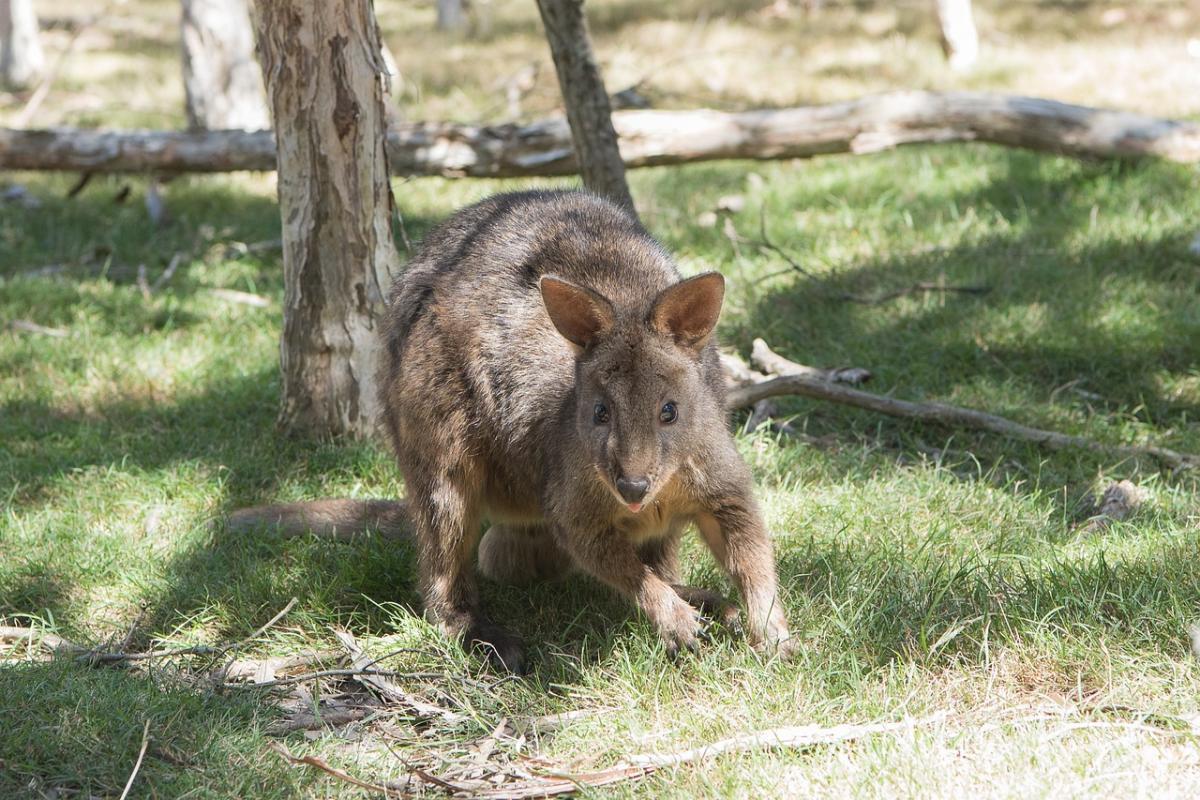21 Wild Animals in Tasmania [Wildlife in Tasmania]
Want to know more about the wildlife of Tasmania, Australia?
Discover 21 wild animals in Tasmania in this post, as well as interesting facts about them. 🇦🇺
Learn All About Tasmanian Animals
Ready to learn all about Tasmanian animals?
I’ve always been fascinated by animals, and by how they can be so different from one country to another. In this guide, we’ll focus on the many animals Tasmania has on the land, in the sky, and underwater.
I’ve split the guide into 4 categories:
- Native animals from Tasmania
- Endangered animals of Tasmania
- What is the national animal of Tasmania?
- How many animals native to Tasmania?
Let’s dive in right away with our first category!
Native Animals from Tasmania
Tasmania is an island state of Australia located off the coast of the southeastern part of the country, from which it is separated by the Bass Strait. It is the 26th-largest island in the world, is Australia’s least populated state, is made of more than 1,000 islands, has an economy dominated by tourism, healthcare, and education, and has been inhabited for up to 40,000 years. It is surrounded by the Pacific Ocean, and its capital and largest city is Hobart, which counts more than 247,000 inhabitants (or almost half of Tasmania’s total population).
An interesting aspect that I wanted to tackle is the Tasmanian wildlife. In light of that, I have listed the best of it, and I hope you will love learning what animals live in Tasmania.
Here’s the Tasmania animals list.
1. Tasmanian cave spider

- Name: Tasmanian cave spider
- Scientific name: Hickmania troglodytes
- Conservation status:
You will quickly realize it, Tasmania is a unique land, home to an abundance of fossil evidence and of primitive animals. In fact, the Tasmanian cave spider is one of the most primitive spiders in the world! It is the last of a very old lineage and is completely separated from its closest relatives, found in Chile and the rest of South America.
This spider has a red to brown carapace and can grow up to 2 cm / 0.79 in long.
2. Tasmanian devil

- Name: Tasmanian devil
- Scientific name: Sarcophilus harrisii
- Conservation status:
Of course, the Tasmanian devil is in Tasmania. It is the major emblem of the island, and by far the most iconic animal you will find there. However, it is considered endangered, and its population has decreased by more than 80 percent due to the devil facial tumor disease, which is slowly but steadily spreading all across the island.
This mammal is the largest carnivorous marsupial in the world, and since no cure is known for the disease, it might be gone relatively soon.
3. Tasmanian nativehen

- Name: Tasmanian nativehen
- Scientific name: Tribonyx mortierii
- Conservation status:
The Tasmanian nativehen, also spelled as native hen or native-hen, is a large species of flightless bird endemic to the northern half of Tasmania, in which it is very common. It is pretty stocky and mostly olive-brown.
This bird is sedentary and usually lives around open grassy areas near bodies of water. According to fossil records, it used to be found on the Australian mainland until 4,700 years ago.
4. Tasmanian emu

- Name: Tasmanian emu
- Scientific name: Dromaius novaehollandiae diemenensis
- Conservation status:
The Tasmanian emu was a subspecies of the emu. It disappeared in the middle of the 19th century (around 1865) due to overhunting, not only as a pest but also for food. It had become separated from the mainland, much more famous emu, during the Late Pleistocene.
This bird used to be abundant in Tasmania. It was part of several Aboriginal ceremonies and was particularly common in Van Diemen’s Land.
5. Tasmanian wedge-tailed eagle

- Name: Tasmanian wedge-tailed eagle
- Scientific name: Aquila audax
- Conservation status:
The Tasmanian wedge-tailed eagle is a subpopulation of the wedge-tailed eagle endemic to the island of Tasmania, while the other subspecies are found exclusively all around mainland Australia.
This eagle is the largest bird of prey in Australia, as well as one of the most powerful predators in the world, hunting a wide variety of prey, from mammals to birds and reptiles. Thanks to the introduction of the European rabbit and multiple roadkills, this eagle is currently thriving.
6. Southern brown tree frog
- Name: Southern brown tree frog
- Scientific name: Litoria ewingii
- Conservation status:
The southern brown tree frog, also known as Ewing’s tree frog, the brown tree frog, or the whistling tree frog, is a species of frog native to southeastern Australia and Tasmania. On the island, it is the most frequently encountered frog, and it has also been introduced to New Zealand.
This frog is sometimes kept as a pet as it does not require any license, but only a light cycle and a small water source.
7. Thylacine
- Name: Thylacine
- Scientific name: Thylacinus cynocephalus
- Conservation status:
The thylacine, also known as the Tasmanian wolf or the Tasmanian tiger, was a species of carnivorous mammal native to Australia, New Guinea, and Tasmania. It was both shy and nocturnal and was a medium-to-large-size canid.
This mammal was already extinct in New Guinea and the Australian mainland before the Europeans settled in, and its last stronghold was in Tasmania. However, through intensive hunting encouraged by bounties, it vanished off the face of the Earth.
8. Green rosella

- Name: Green rosella
- Scientific name: Platycercus caledonicus
- Conservation status:
The green rosella, also known as the Tasmanian rosella, is a species of parrot endemic to Tasmania and several other islands around the Bass Strait.
It is mostly yellowish-green and can be found in a wide range of habitats on the island, from temperate rainforests to wet forests, woodlands, conifer forests, and grasslands, as long as there is enough tree cover, at elevations of up to 1,500 m / 5,000 ft above sea level.
9. Black currawong

- Name: Black currawong
- Scientific name: Strepera fuliginosa
- Conservation status:
The black currawong, also known as the black jay, is a large species of passerine bird endemic to Tasmania. It resembles a crow, and is 50 cm / 20 in on average, with piercing yellow eyes. It is further divided into 3 subspecies, all of which are located in Tasmania or nearby islands.
This bird is both vocal and loud. It is widespread in Tasmania but is absent from areas below 200 m / 660 ft altitude, and mainly breeds in the Central Highlands.
10. Platypus

- Name: Platypus
- Scientific name: Ornithorhynchus anatinus
- Conservation status:
The platypus, also known as the duck-billed platypus, is one of the most unique animals on the entire planet. It resembles a mole, but also a beaver and a duck, lays eggs although it is a mammal, is one of the only mammals able to detect its prey through the electric fields generated by its muscular contractions (known as electrolocation), and is one of the very few venomous animals.
This monotreme is endemic to eastern Australia and Tasmania and is one of Australia’s strongest faunal emblems.
11. Yellow wattlebird

- Name: Yellow wattlebird
- Scientific name: Anthochaera paradoxa
- Conservation status:
The yellow wattlebird, also known as the Tasmanian wattlebird or the long wattlebird, is the largest species of honeyeater. It is endemic to Tasmania, where it is fairly common, mostly in the central and eastern areas.
This bird is acrobatic and has strong flight. It is very easy to approach, and can often be seen in gardens, looking for food. When it comes to breeding, however, it can be particularly aggressive and fiercely defend its territory from other birds.
12. Tasmanian pygmy possum
- Name: Tasmanian pygmy possum
- Scientific name: Cercartetus lepidus
- Conservation status:
The Tasmanian pygmy possum, also known as the tiny pygmy possum or the little pygmy possum, is the smallest possum in the world. Despite its name, it is not endemic to Tasmania, but can also be found in small areas of southeastern mainland Australia.
This mammal is both arboreal and nocturnal and is thus very difficult to spot. It inhabits forest undergrowth and shrublands, but it rarely goes up into the higher branches of trees, which would make it more vulnerable to birds of prey.
13. Tasmanian pademelon

- Name: Tasmanian pademelon
- Scientific name: Thylogale billardierii
- Conservation status:
The Tasmanian pademelon, also known as the red-bellied pademelon or the rufous-bellied pademelon, is a small species of pademelon endemic to Tasmania and the neighboring Furneaux and King Islands, which it is very widespread and abundant.
This marsupial is solitary, nocturnal, and herbivorous; it feeds on a wide variety of plants, from green shoots and grasses to flowers. If you want to spot one in the wild, you should look for it after dusk settles, when it ventures into more open areas, although it usually stays quite close to the forest edge.
14. Southern yellow-tailed black cockatoo

- Name: Southern yellow-tailed black cockatoo
- Scientific name: Zanda funerea xanthanotus
- Conservation status:
The southern yellow-tailed black cockatoo is a large species of cockatoo native to southeastern Australia and Tasmania. As its name suggests, its plumage is almost entirely black except for a yellow tail band and yellow cheek patches.
This cockatoo primarily feeds on seeds and weeds, and it nests in old, native trees, usually greater than 200 years old. It is pretty rare in aviculture and can be found at altitudes of up to 2,000 m / 6,600 ft above sea level.
15. Chocolate wattled bat
- Name: Chocolate wattled bat
- Scientific name: Chalinolobus morio
- Conservation status:
The chocolate-wattled bat is a species of vesper bat endemic to Australia, including Tasmania. It is fairly small and is known to live from sea level to up to 1,570 m / 5,150 ft above it. Similarly to most bats, it is mostly brown, but its color specifically looks like milk chocolate, hence its name.
This bat inhabits the rainforests and treeless plains of Tasmania and roosts in buildings, caves, and tree hollows.
16. Pygmy right whale
- Name: Pygmy right whale
- Scientific name: Caperea marginata
- Conservation status:
The pygmy right whale is a species of baleen whale native to the temperate waters of the Southern Hemisphere. It can reach up to 6.5 m / 21 ft in length and 3,500 kg / 7,720 lb in weight.
The longest individual ever registered had been stranded in Cloudy Bay, Tasmania, and the longest female had been stranded in Stanley, Tasmania. Interestingly enough, while most of the subpopulations of this whale are migrating, the one off Tasmania may be a year-round resident.
17. Eastern gray kangaroo

- Name: Eastern gray kangaroo
- Scientific name: Macropus giganteus
- Conservation status:
The eastern gray kangaroo, also known as the great gray kangaroo or the forester kangaroo, is a very common species of marsupial found all across the eastern third of mainland Australia, and in northeastern Tasmania. Although fairly large, it is substantially smaller than the more famous red kangaroo.
There are several millions of eastern gray kangaroos, and they are known for their very large feet (“Macropus giganteus” means “gigantic large foot”).
18. Common wombat

- Name: Common wombat
- Scientific name: Vombatus ursinus
- Conservation status:
The common wombat, also known as the coarse-haired wombat or the bare-nosed wombat, is a species of marsupial found in southeastern Australia and Tasmania. It is another unique and iconic Australian animal, and is surprisingly large, reaching up to 130 cm /52 in in length!
This marsupial is found in the cooler parts of Australia, and all around Tasmania. It is both solitary and territorial and feeds on plant materials.
19. Long-tailed mouse

- Name: Long-tailed mouse
- Scientific name: Pseudomys higginsi
- Conservation status:
The long-tailed mouse is a species of rodent endemic to Tasmania. As its name suggests, its tail is 1.3 times longer than the rest of its body, and it is used for balance while leaping in rocky habitats.
This mouse is omnivorous, and it feeds on a wide variety of food sources depending on availability. It is nocturnal and lives in the wet forests of Tanzania, where there is high rainfall and lots of possible prey.
20. Australian little penguin

- Name: Australian little penguin
- Scientific name: Eudyptula novaehollandiae
- Conservation status:
The Australian little penguin, also known as the fairy penguin, is a small species of penguin found in Australia and southeastern New Zealand. It inhabits most of the coastlines of southern Australia, and all that of Tasmania.
Tasmania is home to the largest Australian little penguin population in the world, with 110,000 to 190,000 breeding pairs, which mostly live on smaller islands around the main one.
21. European fallow deer

- Name: European fallow deer
- Scientific name: Dama dama
- Conservation status:
Well, you probably did not expect a European animal to be on this list, but the European fallow deer, often called just fallow deer, was introduced to Tasmania in 1830, and to the rest of Australia towards the end of the 19th century. Since then, it has spread to the entire country and can be found all around it.
This deer is now so abundant that it is sometimes considered a pest and a popular game animal.
—
So there you have them, these were my 21 Tasmania native animals. I hope you enjoyed this list and that you learned something new today.
In case you want to learn more about Tasmania wildlife, feel free to keep reading, as I still have lots of things to tell you about:
Endangered Animals of Tasmania
This is definitely the saddest part of the list, but it is very important to raise awareness. Because of this, let’s go through the list of endangered animals in Tasmania.
Here are the animals in danger of extinction in Tasmania (also including the Australian animals).
- White-footed rabbit rat
- Nullarbor dwarf bettong
- Lord Howe gerygone
- Crescent nailtail wallaby
- Lesser stick-nest rat
- and 31 more…
- Mountain pygmy possum
- Dalhousie catfish
- Ziebell’s handfish
- Sand tiger shark
- Great hammerhead
- and 85 more…
- Striped legless lizard
- Spinetail devil ray
- Lord Howe woodhen
- Long-billed black cockatoo
- Green and gold frog
- and 169 more…
To see the full list of endangered species in Tasmania, head over to the International Union for Conservation of Nature’s Red List.
What is the National Animal of Tasmania?
The national animal of Tasmania is the Tasmanian devil.
Obviously, it is the Tasmanian devil that best represents Tasmania. It is by far its most well-known animal, and it has become an emblem of the island, after becoming extirpated from the Australian mainland centuries ago.
This marsupial is the world’s largest carnivorous one, and it is very widespread in Tasmania. Because of the importance of this species for Tasmania’s pride, several conservation programs were launched.

How Many Animals Native to Tasmania?
What is the diversity of native animals in Tasmania Australia?
Let’s look at the total number of species of Chordata (mammals, birds, fishes, and reptiles).
Total number of animal species in Tasmania: 6,058 (9,917 in total in Oceania)
More About Animals in the World!
Loved these Tasmania animal facts?
Find out all Australia’s most popular animals in this post 👉 Top 30 Wild Animals in Australia
Or go deeper into discovering Australian animals through these posts, by state:
- Wild Animals in South Australia
- Wild Animals in Victoria
- Wild Animals in Western Australia
- Wild Animals in Queensland
- Wild Animals in New South Wales
Click here to see ALL the facts on the blog! Spoiler alert: there’s A LOT of them.
Share the knowledge! Click on the buttons below to share information about these Tasmanian native animals with your friends, and help them learn more about the world 🙂




![18 Wild Animals in the Netherlands [Wildlife in the Netherlands]](https://www.kevmrc.com/wp-content/uploads/2022/06/18-wild-animals-in-the-netherlands.jpg)
![13 Wild Animals in Jordan [Wildlife in Jordan]](https://www.kevmrc.com/wp-content/uploads/2022/06/13-wild-animals-in-jordan.jpg)
![21 Wild Animals in Bolivia [Wildlife in Bolivia]](https://www.kevmrc.com/wp-content/uploads/2022/06/21-wild-animals-in-bolivia.jpg)